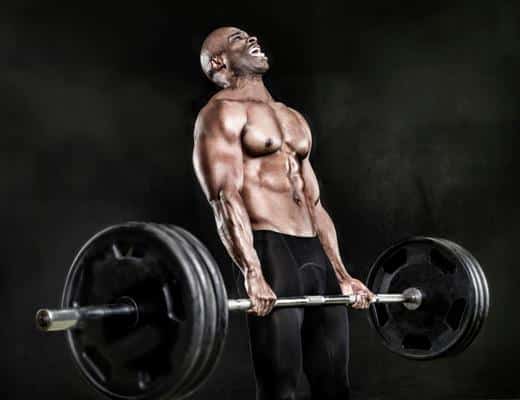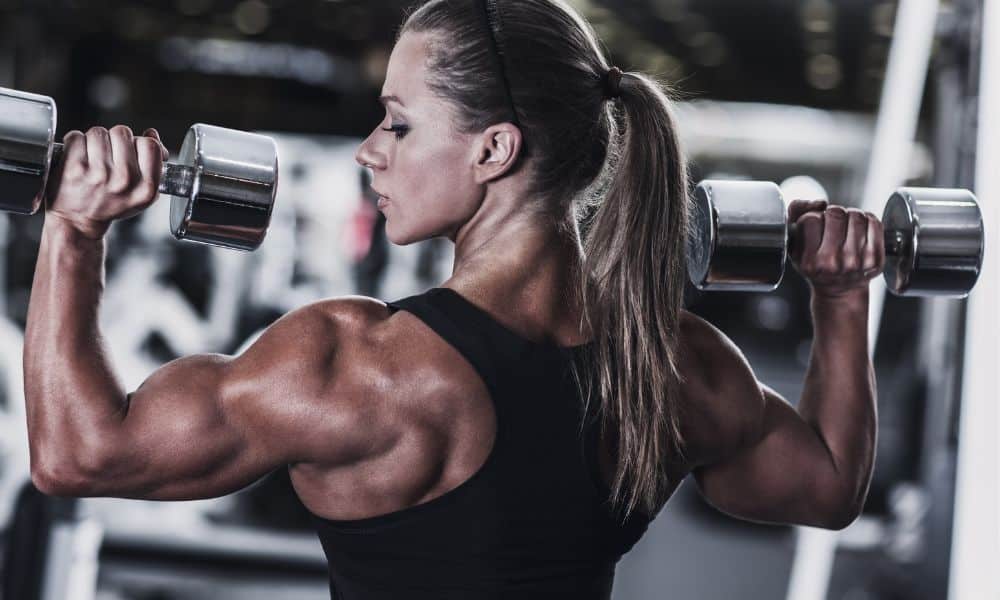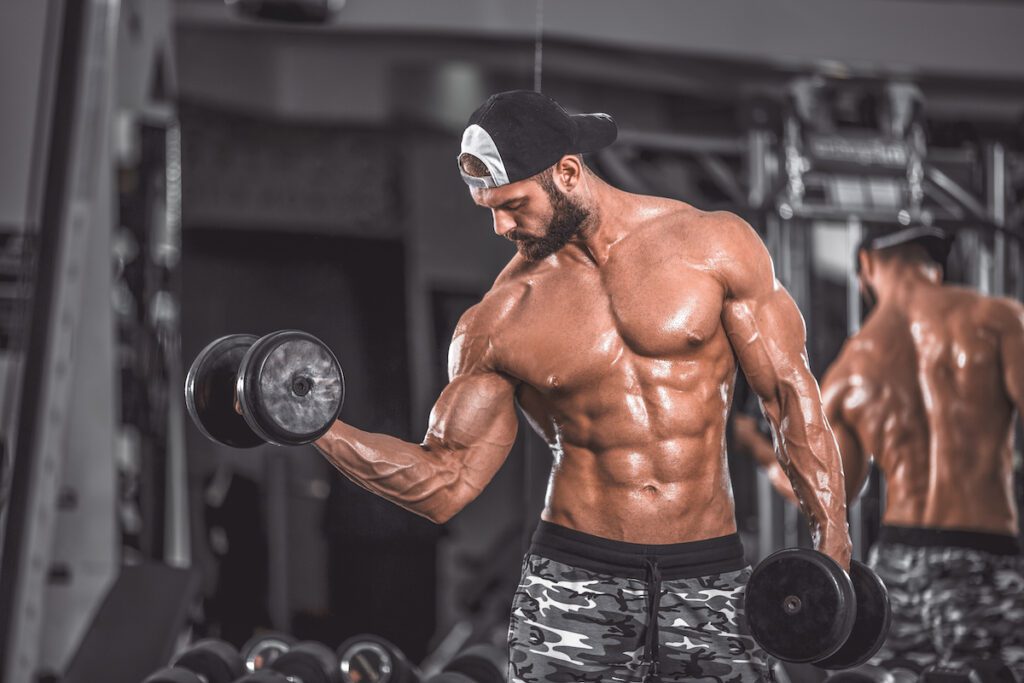Are you curious about how bodybuilders use strength training to grow muscle? The goal of any workout is to create an environment for muscles to grow. The body also needs your diet and sleep to grow muscle. The process of developing power is three-headed. But it gets more complicated with form, volume, progressive overload, and periodization added to the process.
Therefore, to build muscle, you must be a practitioner, student, and scientist all rolled into one. So, what steps do you need to master to get better results from strength training? Is it as simple as using SARMS or is there more to it than that? This article will discuss muscles, connective tissue, and the nervous system.
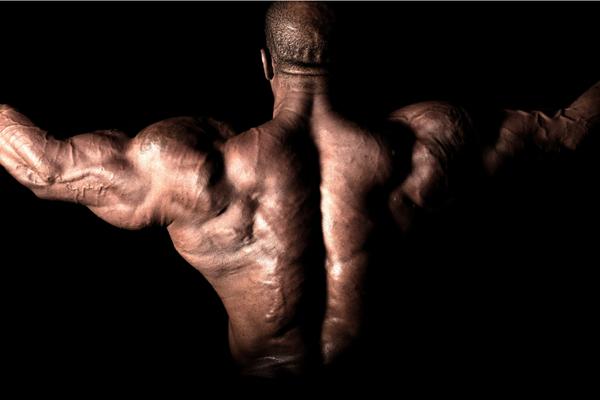
Do You Know the Science Behind Your Muscles
The body uses three types of muscles smooth, cardiac, and skeletal. The smooth muscle controls the autonomic nervous system and includes the muscles of the digestive tract and around the blood vessels. The cardiac muscles have the heart, which the nervous system regulates.
Finally, the skeletal muscles connect to tendinous insertions that attach to bones, pulling them, which produces the desired movement. The skeletal muscle allows us to move as muscles contract and expand. Resistance training improves all types of muscle by making the skeletal muscle stronger and cardiac muscle more efficient and enhancing smooth muscle function.
What Are Muscles?
Proteins make up muscles that are structured in descending order from larger fiber groups to smaller fiber groups. A muscle is a group of motor units separated by a membrane from other groups of motor units. Thus, muscle is connected to bones by tendons. A muscle unit is created with a single neuron and muscle fibers. A muscle’s motor control is determined by the makeup of nerves to fiber—the more fibers per motor unit, the stronger the muscle.
Also, muscle fiber is made of myofibrils, small groups of myofilaments. It is the myofilaments that shorten upon contraction. The myofilaments are made of the protein’s myosin (short, thick filaments) and actin (long thin filaments). Myofilaments are also made of two fewer proteins called troponin and tropomyosin. Thus, the muscle can be broken down from groups of epimysium to perimysium to fascicle to muscle fiber to myofibril.
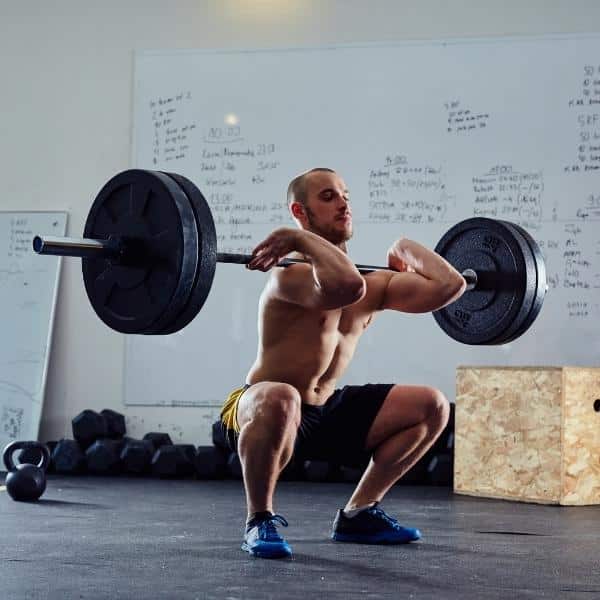
How Do Muscles Move?
During a curl, when a prime mover muscle, such as the bicep, contracts the opposing muscle, the triceps relaxes. This process is called reciprocal innervation. Without reciprocal innervation, an athlete cannot control their body. We call the contracting muscle the agonist and the relaxing muscle the antagonist.
There is a theory called the sliding filament theory that states myofibril contracts when actin and myosin filaments slide over each other. The body uses chemical bonds and receptor sites on the myofilaments to attract actin and myosin. This attraction persists until fatigue breaks it.
What Determines the Amount of Force a Muscle Generates?
The alignment of muscle fibers determines the force that a muscle can generate. Muscle alignment exists when muscles have a parallel, fusiform, triangular, multipennate, unipennate, or bipennate arrangement. Fiber arrangement is determined by genetics but can be altered with training. Muscles have the following formats:
- Parallel arrangement happens when fibers are parallel to the long side of the muscle and stop at either end of the flat tendons.
- Fusiform arrangement happens when fibers are parallel to the tendons, thus moving at incredible speeds without losing force.
- Triangular arrangement fiber spreads over broad areas over the central tendon and looks like a triangle.
- Unipennate muscle fibers align from one side to the other side of the tendon.
- Bipennate muscles have an alignment of fibers on both sides of the muscle.
- Multipennate muscle fibers align from many directions and to several tendons.
Muscles with a unipennate, bipennate, or multipennate arrangement can produce more force than fusiform. However, this is at the expense of the speed at which a muscle changes length during a contraction, called contractile velocity. Here is an example of the different types of muscle alignments:
- Parallel – Stylohyoid in the neck
- Fusiform – Biceps Brachii in the arm
- Triangular – Pectoralis in the chest
- Unipennate – Flexor pollicis Longus in the hand
- Multipennate – Deltoid in the shoulder
- Bipennate – Soleus in the lower leg
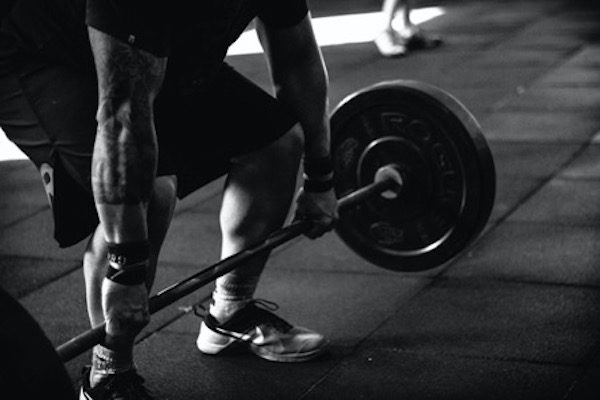
The Key to Building Bigger Muscles
The body has three muscle fiber types: Type I, Type IIa, Type IIx, and Type IIC. Type I muscle fibers are slow-twitch and red. Slow-twitch muscle fibers are highly resistant to fatigue and injury but can only create a small amount of force. Type I muscle fibers are called upon to perform activities when the body uses the oxidative energy pathway. This muscle group performs cardio exercises and has a high fat content. Also, the fiber area is small.
Type IIa muscle fibers are fast twitch and intermediate fibers. These muscles are large and more robust than Type I muscle fibers. Type IIa is called upon for high-capacity glycolytic activity. As a result, these muscles produce high force for more extended periods. Also, they have medium resistance to fatigue. Also, the fiber area is intermediate.
Type IIx muscle fibers are fast twitch and often called couch potato fibers. These muscle fibers are found in sedentary individuals. Type IIx makes up about 15% of a sedentary person’s total muscle mass. Oxidative capacity is low for this muscle fiber type. Also, Type IIx has a low resistance to fatigue and fat content. Fiber Type IIx is extremely strong. Sedentary people lose their Type IIx fibers once they start a resistance training program. Also, the fiber area is large.
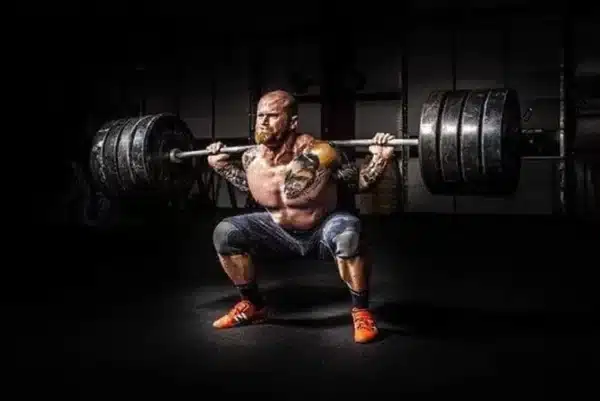
The Role of Supporting Tissue in Bodybuilding
The primary job of connective tissue is to join muscles to bones and joints. Connective tissue is made of collagen. Also, older connective tissues have few cells and receive less blood, oxygen, and other nutrients. Resistance training increases the strength, size, and resistance to injury of connective tissue. Thus, it helps to repair damaged ligaments and tendons to regular power.
Tendons
Tendons are extensions of muscle fibers that connect muscle to bone. Also, the tendon is more pliable than ligaments but does not contract as muscles do. However, tendons have various proprioceptors and sensory organs like a muscles. The organs provide information about body movement and position. Also, they protect connective tissue as well as muscle.
The Golgi tendon organ resides in tendon tissue and is used as a safety valve. The Golgi tendon organ monitors increasing muscular contractions and provides feedback to the nervous system. Also, the Golgi tendon organ is involved in the feedback loop. The feedback loop occurs when tension in the body becomes too great, causing the body to stop muscle contraction and reduce the likelihood of injury. Finally, training with high-speed contractions, bands, and chains can inhibit the response of the Golgi tendon organ.
Ligaments and Cartilage
Ligaments join bones to bones. The ligament is made of collagen and an elastic fiber called elastin. The elasticity in ligaments is limited but allows for joint movement. Cartilage is a firm, stretchy, flexible white material. It is located at the ends of the ribs and between vertebral discs.
Also, cartilage can be found on joint surfaces, nose, and ears. Cartilage provides shock absorption and structure. It also provides lubrication for joints. It does not have its blood supply like tendons and ligaments. Instead, cartilage receives oxygen and nutrients through the synovial fluid. Thus, cartilage heals very slowly because of the limited nutrients it receives from the body.
The Nervous System Controls the Mind to Muscle Connect
The nervous system comprises the central nervous system (CNS) and the peripheral nervous system (PNS). The CNS includes the brain and spinal column. It receives messages, interprets them, and sends instructions back to the body. The PNS relays messages from the CNS to the body (efferent system) and messages to the CNC (the afferent system) from the body. It is responsible for sensing changes inside and outside the body.
Also, it can interpret changes and respond to the interpretations by causing muscular contractions or glandular secretions. Many fitness experts refer to the connection between the CNS and PNS as the mind-to-muscle connection during strength training.
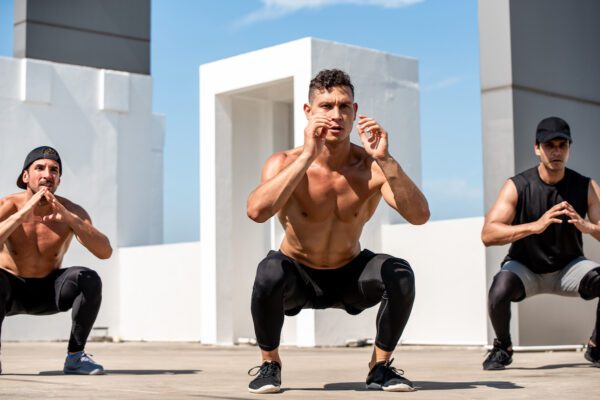
Principles and Theories of Neuromuscular Activity
There are several neuromuscular activity theories besides the sliding filament theory. Some other approaches worth mentioning are all or none theory, the size principle of fiber recruitment, the stretch reflex, neural adaptations, hypertrophy, hyperplasia, and satellite cells.
The all-or-none principle states that a motor unit will complete the contract or relax, and there is no middle ground. This principle explains why bodybuilders work out muscles from different angles, speeds, and ranges of motion. The all-or-none code also reinforces the use it or lose it principle. The more a muscle is introduced to a stimulus, the better it adapts. Therefore, bodybuilders practice muscle confusion because not all motor units are activated in a movement.
The Size Principle of Fiber Recruitment
When performing an exercise, slow twitch fibers are recruited first. Thus, fast twitch fibers are recruited last. This process is called the size principle of fiber recruitment. The size principle of fiber recruitment is also called the Heneman principle. The body recruits slow twitch fibers first because they have a high level of reliability with fewer motor units. In contrast, fast-twitch fibers have a low level of reliability with more significant motor units. Therefore, the body starts to recruit fast twitch muscles once a muscle uses more than 25% of its maximum strength.
The Stretch Reflex
The stretch reflex principle states as a muscle is stretched, muscle spindles become activated, and the brain receives information that tells the muscle to work. Muscle spindles are sensory receptors within the center of a muscle that monitor changes in the length of the muscle.
They relay this information to the central nervous system via sensory neurons. This principle explains why a bodybuilder can bench press more weight when not pausing at the press’s bottom. In other words, the body stores energy during the eccentric portion of the lift and releases it during the concentric part of the lift.
Neural Adaptations
The neural adaptation principle states that we can improve the nervous system with resistance training, like muscle mass. Bodybuilders can improve strength output, mental concentration, training intensity, pain management, and glandular secretions by strengthening the nervous system. Major exercises like the squat and deadlift provide the most significant benefit. Also, this principle reminds us that the nervous system needs rest and recovery, just like the muscles.
Hypertrophy
The three factors that cause hypertrophy are mechanical tension, muscle damage, and metabolic stress. When a muscle is introduced to intense resistance training and muscle stretch, it creates mechanical tension. In comparison, muscle damage causes delayed muscle soreness, which sets in between one to three days after weightlifting. Thus, metabolic stress comes from an aerobic metabolism which activates hormones like testosterone to create hypertrophy. The body’s natural state is homeostasis, but adaptation occurs when resistance training is disrupted.
Therefore, muscle hypertrophy occurs when the body performs resistance training with heavy weights. At the same time, sarcoplasmic hypertrophy is the accumulation of water, glycogen, and myoglobin stored in the muscle cell. Therefore, sarcoplasmic hypertrophy occurs when the body performs resistance training with a heavy workload. It takes about six weeks to see changes in muscles because initially, the adaptations are neurological, but as neurological adaptations start to slow, the muscle begins to grow.
Hyperplasia
Hyperplasia is the growth of muscle tissue caused by an increase in the reproduction rate of its cells. Hypertrophy happens when cells get more prominent, while hyperplasia happens when cells increase in number. Hyperplasia in humans remains controversial. Studies on hyperplasia have shown mixed results.
Satellite Cells
After volume overload from resistance training, satellite cells repair damaged muscle tissue causing muscle growth. Bodybuilders use resistance training to damage muscle tissue, signaling that the body needs to get stronger and more prominent.
Resistance training is a stressor, and muscle hypertrophy is the body’s response to weight training. Satellite cells are the skeletal muscles’ stem cells. When satellite cells fuse with muscle fibers, this causes the body to synthesize more protein, causing muscles to grow more robust. Bodybuilders use creatine, protein, other supplements, and drugs to optimize muscle hypertrophy after resistance training.
The Last Word on How Bodybuilders Use Strength Training to Adapt and Grow Muscle
Understanding the relationship between muscles, tendons, ligaments, and the nervous system is the beginning and foundation of bodybuilding. As the body is introduced to stress caused by resistance training, muscles grow and adapt to those stressors. Lifting heavy with the optimum volume load recruits the largest high-threshold motor units. This causes more muscle fiber stimulation.
In addition, bodybuilders work all angles of the muscle using high and low reps, high and low speed, compound, stretch, eccentric, peak contraction, and time under tension. Generally, lifting in a range of 8 to 12 reps for 3 – 6 sets at 70 to 80% of one rep max will allow a bodybuilder to reach maximum volume overload. We can find the volume by multiplying the weight, reps, and sets.
The goal of bodybuilding is to maximize volume in the shortest time possible. Thus, a rest period between 1 – 3 minutes stimulates muscle growth. If you love bodybuilding, share this article on Facebook or Twitter so that others can learn more about building muscle.

